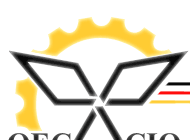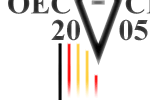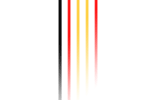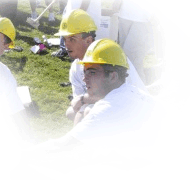 |
 |
 |
 |
 |
 |
 |
||
 |
|
The goal of the Corporate Design Category is to encourage undergraduate engineering students to use their ingenuity and education to tackle a genuine problem faced by practicing engineers in their daily work. In industry, the engineer is responsible to investigate problems and design cost effective solutions. In this category, competitors must analyze and design a solution to a problem faced by a recognized corporation operating in Canada. Winning entries will combine originality, technical and economic feasibility, and a high quality presentation and exhibit. View OEC 2005 Corporate Design Topics Entrance Requirements One (1) team per school consisting of up to four (4) people may be accepted into the Corporate Design category. A team may enter Corporate Design by one of two methods: Method 1: Select a problem from the OEC list
Method 2: Find a problem
Each team is required to submit a one (1) page abstract that summarizes their design. The abstract will be reviewed by the OEC Organizing Committee to assess the suitability of the design for inclusion in Corporate Design and will be given to the judges for information prior to the start of judging. Competitors are also required to forward a copy of the design solution report and any findings to the company submitting the problem. Category Format Teams in Corporate Design are required to set up an exhibit in a trade show style booth and present an oral presentation at the competition. The exhibit should display the design in a clear, concise, well-organized, informative, and professional manner. Project drawings and technical and economic analysis reports should be part of the display. Display of a prototype or model to demonstrate the feasibility of the design is strongly recommended. During public viewing hours, the exhibit must be staffed by at least one team member in order to answer questions. For the trade show style booth, competitors will be given:
For the presentation, competitors will be given:
Please note that time constraints may be subject to change. In the event that a sufficient number of teams enter Corporate Design, the teams will be split into two groups each with its own distinct panel of judges. The top four semi-finalist teams from each group will then be required to repeat their presentation for the other panel of judges. After the judging, both panels of judges will combine and select first, second, and third place from the eight semi-finalist teams. The Technical Excellence and Social Awareness remain open to all teams in Corporate Design regardless of whether or not they reached the semi-final round. Judging The most important aspects of evaluation in this category are depth of understanding of the topic, a creative solution to the company's problem, technical and economic feasibility, effective communication, and the quality of the presentation. The depth of the team's understanding of the topic will be assessed during the question period. In order to be considered for an award in this category the team must convince the judges that the design is viable and will work if implemented. The marking scheme for the Corporate Design Category is as follows: Technical Depth and Accuracy - 20%
Meeting the Corporation's Need - 20%
Economic Feasibility - 15%
Originality - 15%
Prototype and Model - 10%
Presentation and Exhibit - 20%
Competitors will be assessed a penalty for not having the exhibit set up on time, not presenting within the allotted time frame, and/or not having at least one team member available to answer questions during exhibition hours. Awards 1st, 2nd and 3rd place awards TBD. Special Awards available in this category are:
|
 |